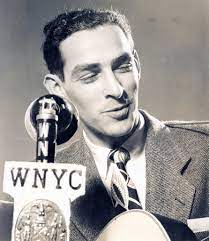Thu 27 Oct 2022
The victim of Synanon’s rattlesnake attack dies 44 years later — because of it?
Posted by DavidMitchell under General News, History
1 Comment
Caveat lectorem: When readers submit comments, they are asked if they want to receive an email alert with a link to new postings on this blog. A number of people have said they do. Thank you. The link is created the moment a posting goes online. Readers who find their way here through that link can see an updated version by simply clicking on the headline above the posting.
On Oct. 10, 1978, attorney Paul Morantz reached into the mailbox of his Pacific Palisades home and was bitten by a 4.5-foot-long rattlesnake whose warning rattles had been cut off. The snake had been placed there by two men whose truck’s license plate was traced to Synanon headquarters.
Morantz a week earlier had won a $300,000 judgment for a woman who said she’d been abducted by Synanon and abused. Synanon founder Charles Dederich was offended by the judgment and was repeatedly heard asking his followers, “Why don’t you break his [Morantz’s] legs?” an ex-member told me. A few days before the rattlesnake attack, Morantz himself called me to say he was aware a campaign against him had been launched in Synanon and that he was concerned about a possible attempt on his life.

Synanon attorney Phil Bourdette subsequently turned over to Los Angeles police two members of the cult suspected of the crime. They were Lance Kenton, 20, son of bandleader Stan Kenton, and Joe Musico, 28, a Vietnam veteran who had entered Synanon as a drug addict.
Paul Morantz in his younger days.
Morantz went on to litigate against brainwashing by a variety of cults, including Scientology, Peoples Temple, the Hare Krishnas, and the Rajneesh movement. He represented various clients pro bono and was frequently described as heroic.
But he never completely recovered from the snake’s bite. “To this day,” Oxygen Crime News reported two years ago, “Morantz suffers from a lifelong illness related to the rattlesnake venom, which requires him to receive blood transfusions every other week.” The music magazine Shindig noted that Morantz said he got blood disease from the venom.

On Monday I received a sad email from Morantz’s son Chaz, saying that his father “passed away yesterday at the Santa Monica hospital. I was with him when he let go peacefully after far too much pain and suffering these last couple of years.”
Chaz wrote that this photo “was taken just a couple of months ago when we took him out for his 77th birthday, for sushi in the Palisades.”





 Before then, railroad companies were more concerned with toilet waste landing in train stations during stops. In the 1950s, all this inspired a Canadian-American folksinger/songwriter, Oscar Brand (1920-2016), to write a
Before then, railroad companies were more concerned with toilet waste landing in train stations during stops. In the 1950s, all this inspired a Canadian-American folksinger/songwriter, Oscar Brand (1920-2016), to write a